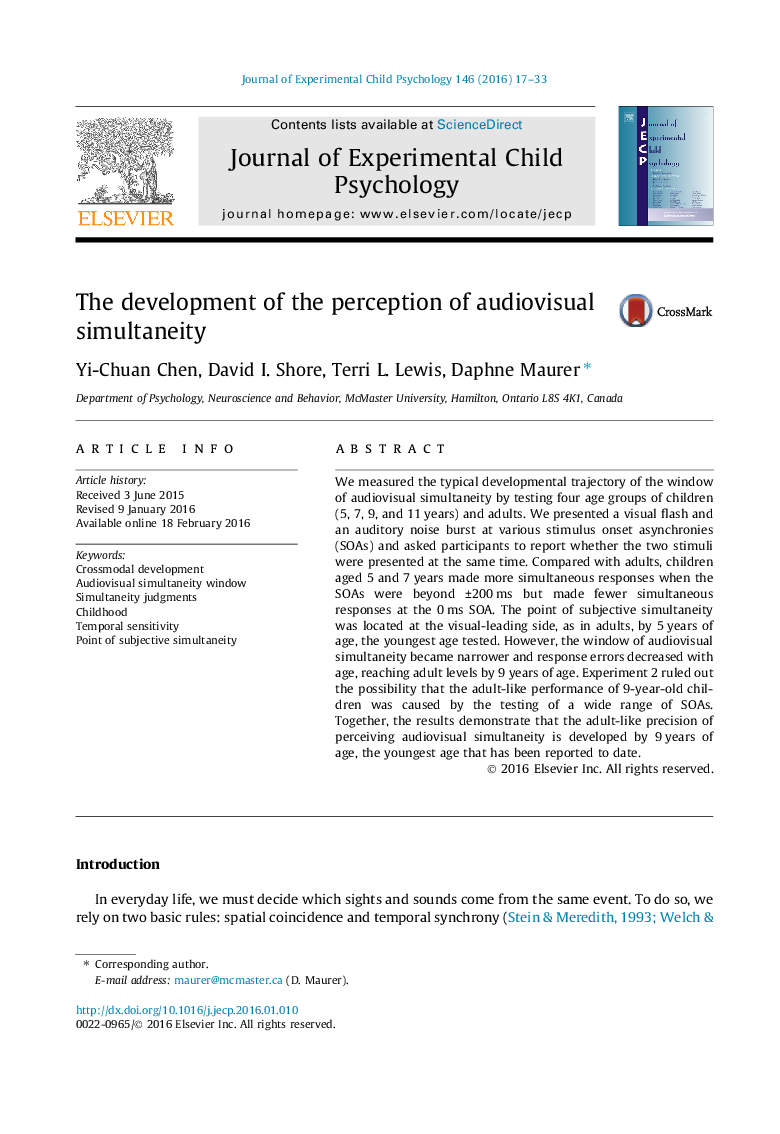| Article ID | Journal | Published Year | Pages | File Type |
|---|---|---|---|---|
| 917919 | Journal of Experimental Child Psychology | 2016 | 17 Pages |
•Adults are good at judging when a flash and beep are simultaneous.•Between age 5 and 9, children become as precise as adults.•When a flash leads a beep, adults are most likely to judge them as co-occurring.•This pattern is already present by age 5.•Young children are more likely to spuriously conjoin visual and auditory stimuli.
We measured the typical developmental trajectory of the window of audiovisual simultaneity by testing four age groups of children (5, 7, 9, and 11 years) and adults. We presented a visual flash and an auditory noise burst at various stimulus onset asynchronies (SOAs) and asked participants to report whether the two stimuli were presented at the same time. Compared with adults, children aged 5 and 7 years made more simultaneous responses when the SOAs were beyond ±200 ms but made fewer simultaneous responses at the 0 ms SOA. The point of subjective simultaneity was located at the visual-leading side, as in adults, by 5 years of age, the youngest age tested. However, the window of audiovisual simultaneity became narrower and response errors decreased with age, reaching adult levels by 9 years of age. Experiment 2 ruled out the possibility that the adult-like performance of 9-year-old children was caused by the testing of a wide range of SOAs. Together, the results demonstrate that the adult-like precision of perceiving audiovisual simultaneity is developed by 9 years of age, the youngest age that has been reported to date.
